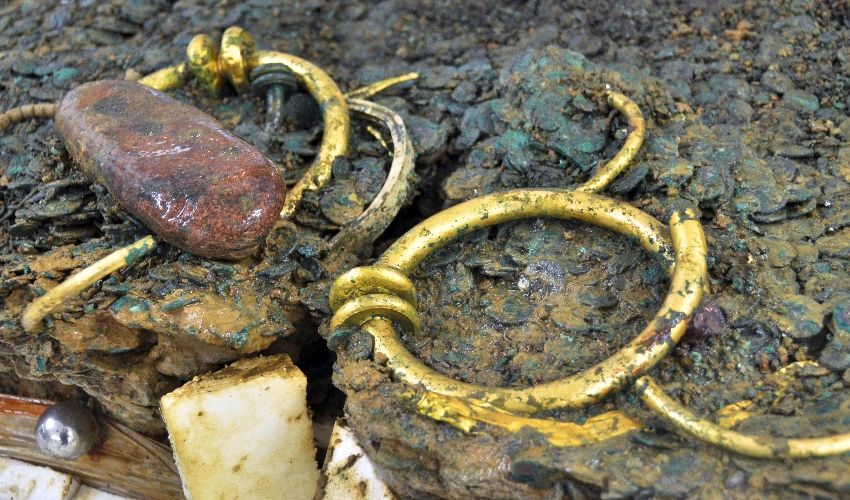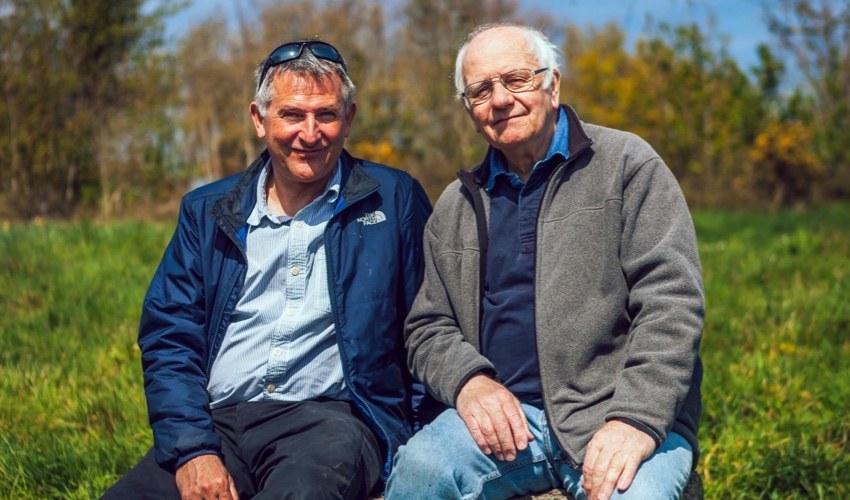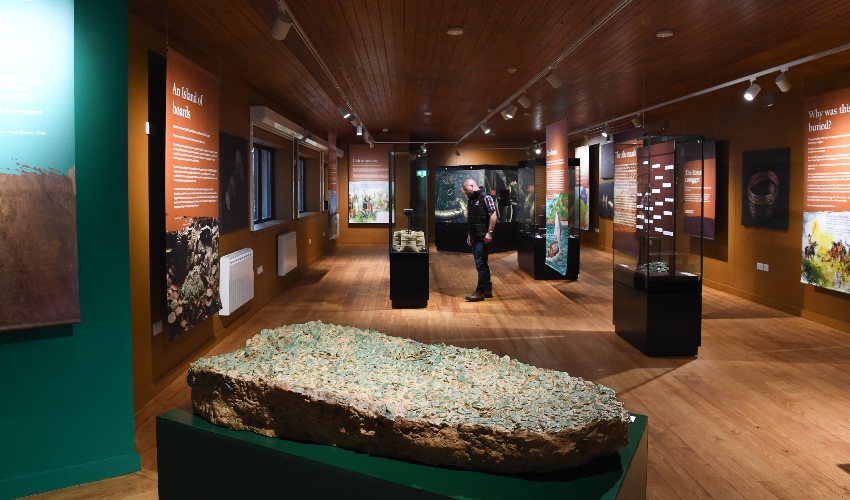


It's nearly two years since the Le Câtillon II coin hoard was controversially purchased by Government for £4.5m against official advice, raising questions around the potential rise of so-called "casino metal-detecting"... so, where are we now?
From concerns about thwarting illegal "nighthawking" and looting to legislative delays and the creation of an educational trust, Express charts the latest developments...
Since 2021, the Société and authorities have been aware of people searching for items under the cover of darkness. “Nighthawking” is the illegal search for and removal of antiquities from the ground using metal detectors. It is against the law to remove items from a listed site without permission.
A planning application last week was put forward for a “non-invasive” archaeological survey of the fields in Grouville where two Celtic hoards were discovered.
If Planning agree, four fields in Le Câtillon will be surveyed by the Société Jersiaise’s Field Archaeology Department to find, record and remove items of archaeological significance to stop them being plundered by amateur detectorists.
Société Field Archaeologist Hervé Duval said that the search for artefacts would only cover the surface of recently ploughed fields and take two to three days.
“The proposed methodology for the work involves field walking and surface-level metal detecting to recover potential archaeological materials and preserve the site,” he said.
The listed fields are known to hold significant heritage value, with the most noted discoveries being Celtic hoards discovered in 1957 and 2012.
The 1957 find consisted of nearly 2,500 Gaulish coins and several pieces of jewellery that may have been stored in one or multiple ceramic vessels.

Pictured: The Le Câtillon Celtic Hoard was discovered by local detectorists Richard Miles and Reg Mead in June 2012.
The 2012 discovery, by detectorists Reg Mead and Richard Miles, comprised approximately 70,000 Gaulish coins, ingots, and jewellery. That year, several archaeological features, including pits and postholes, were also observed.
All of these remains are likely to date from the 1st century BC.
A report accompanying the planning application states: “The potential for the presence of remains belonging to the aforementioned periods is high.
“However, the likelihood of remains from other periods is low, although the existence of Neolithic activities should be considered given the proximity of Le Câtillon to La Hougue Bie.
“The level of archaeological preservation is expected to vary across the site. The proposed activities for the non-invasive survey align with a Written Scheme of Investigation and could be undertaken under standard archaeological Planning conditions.
“Following the completion of the fieldwork, a report summarising the programme’s findings will be prepared and submitted to the relevant official at the Field Archaeology Department within a reasonable timeframe.
“The site archive will be entrusted to the Société Jersiaise’s Coutanche Library for safekeeping.”
The 2012 Le Câtillon II Coin Hoard was purchased by the Government in December 2021 for £4.25m, which came out of the Civil Asset Recovery Fund.

Pictured: The Le Câtillon II Coin Hoard went on display in a purpose-built exhibition hall at La Hougue Bie in March.
It included the world’s largest ever Celtic coin hoard, with coins from the Coriosolitae, Osismii, Redones and Baiocasses tribes, and additional coins minted in southern Britain in around 40 BC.
It also contained Europe’s largest collection of torque neck rings, a fabric bag full of gold and silver jewellery and ingots, as well as flora and fauna, including millipedes, centipedes and other arthropods which fell into the pit where the hoard was buried 2,000 years ago.
At the time of the deal being announced, British archaeologists raised concerns that the £4.5m sum – which was paid out against official advice from senior civil servants and the UK's Treasure Valuation Committee – set a "damaging" precedent for valuations that will affect museums' ability to keep important historic finds in public ownership both locally and across the water.
According to researcher Andy Brockman, who edits The Pipeline, an investigative publication exploring the intersection between archaeology, money and politics, there were strong fears in the archaeological community that the move had paved the way for so-called “casino metal detecting”.
Listen: Researcher Andy Brockman told Express abut the issues Jersey's decision created in a previous Bailiwick Podcast episode.
“The higher a find like Le Catillon II is valued, the more difficult it becomes for a local museum in particular to actually raise the money to match a commercial valuation. That’s one danger,” he explained.
“There’s a second danger which is that it promotes a kind of – for want of a better phrase – ‘casino metal detecting’, where someone goes out and buys a metal detector, gets permission or, worse, goes out without permission and detects illegally in the hope or expectation – even if it’s statistically unlikely… of finding a Le Catillon of their own.”
The then-Treasury Minister, Deputy Susie Pinel, said the situation had been like a “tap on the shoulder” that the island needs to look closely at its legislation around 'treasure'.
Work to develop such as law is currently behind schedule. It was firstly due to be complete in 2022, then islanders were told that it would be by the end of this year.
However, Economic Development Minister Kirsten Morel recently revealed that this had now been further pushed back.
While the first part covering the reporting, protecting and recording of items of archaeological significance discovered in the island should be completed by the end of 2023, development of legislation containing the practical detail, for issues such as rewards for those discovering such items, will take longer to allow for consultation and will instead be brought forward in 2024.
The Le Câtillon II hoard is now on display in a specially built gallery at La Hougue Bie.
£250,000 of the £4.25m was ringfenced to establish an educational trust.
Following a meeting last month, it was resolved that this will be administered by The Highlands College Foundation and focus on “the promotion of scientific and educational research into the Le Catillon II Hoard, including research by staff, students and alumni of Highlands College and research by any third party, in Jersey or overseas”.
Comments
Comments on this story express the views of the commentator only, not Bailiwick Publishing. We are unable to guarantee the accuracy of any of those comments.